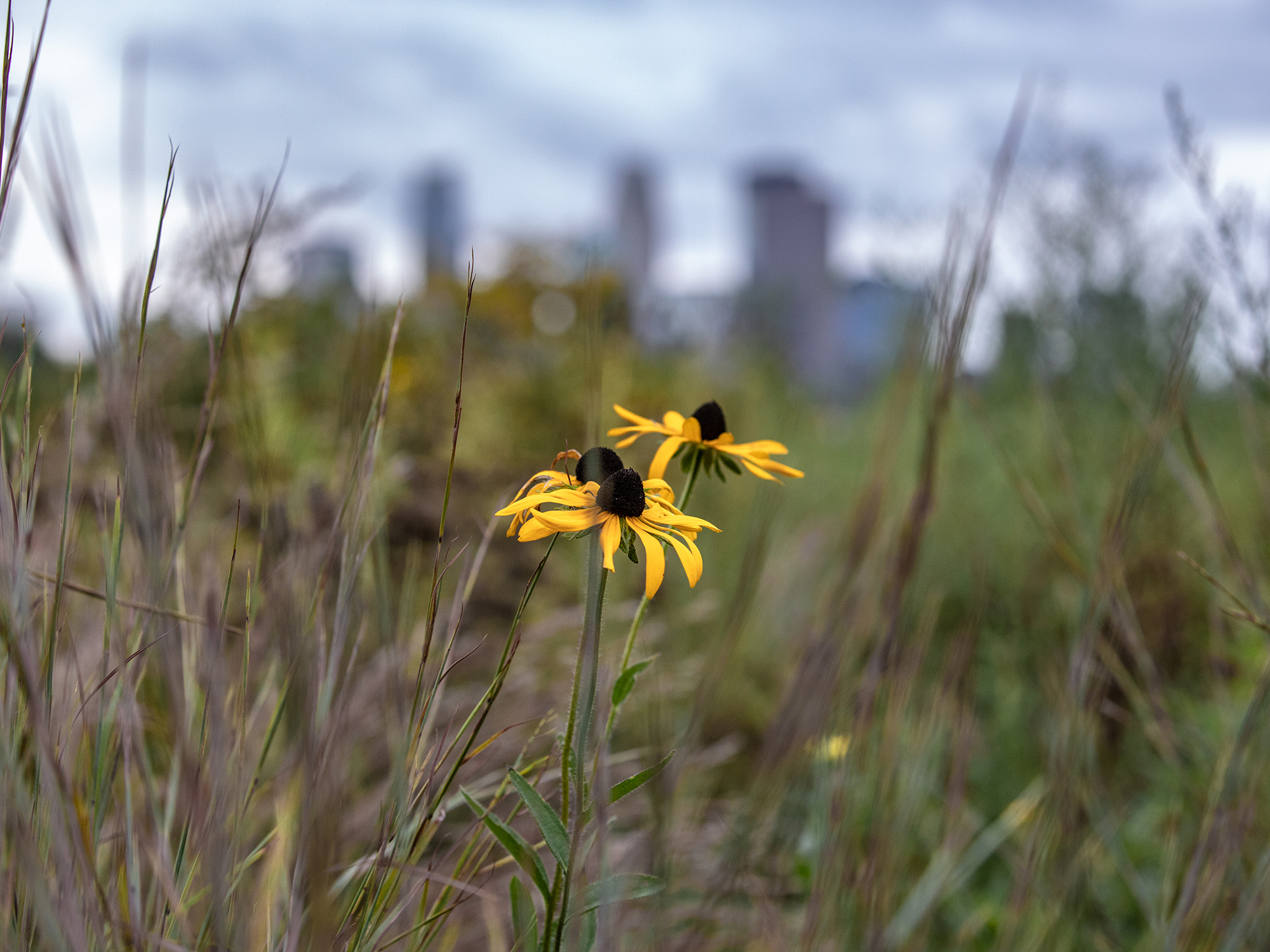5 ways you can protect habitat and wildlife

Small patches of habitat and corridors of protected and restored land are crucial for wildlife in our metro area. (Photo by Tom Reiter for FMR)
Our river corridor's prairies, wetlands and woodlands are home to thousands of wildlife species. As part of our 30 ways to help the river series, here are five ways you can nurture and help protect their habitat.
1. Garden for pollinators
Small but mighty, pollinators have an enormous job. Without them, most plants (including the crops we eat) couldn't fruit. Loss of pollinators would cause food shortages for wildlife and people alike.
If you rent or live in the city, you may feel like converting part of a small yard to pollinator habitat couldn't impact much. But pollinators are actually drawn to patch-like gardens. They serve as crucial oases, especially in urban and residential neighborhoods where habitat can be scarce. So plant some pollinator favorites like milkweed, coneflower and aster, then see who drops by. Check out our page on pollinators for more resources on how to help.
2. Make your windows bird-safe
The Mississippi River is a globally significant corridor for migratory birds, and you can help ensure safe passage for those on the flyway and for birds that call our metro area home.
Around 1 billion birds die each year after hitting windows in the United States and Canada. You can help them avoid your windows by breaking up the reflections using stickers, film, paint or string. Check out the American Bird Conservancy's resources to find the right method for your home.
3. Be a mindful dog owner
Make sure to pick up after your four-legged friends at home and on walks. Pet waste contains harmful bacteria. If pet waste is still in your yard or at the park when it rains, bacteria leaches into runoff and into the river. In fact, some areas of the Mississippi are impaired for E. coli. So be vigilant, especially before rains and snowmelt events.
While we're on the subject of dogs, you can protect habitat and wildlife by keeping your dog on a leash and only taking them to parks and open spaces where they're allowed. (Check out more tips and photos of FMR's beloved dogs here.)
4. Become a community scientist
Scientists sometimes turn to the public to help collect wildlife and insect data. Locally, FMR has worked with the Monarch Joint Venture to collect data on monarch larvae, the Twin Cities Coyote and Fox Project to track metro canids and more. Visit our community science page to find projects you can contribute to on your own. FMR also works with volunteers to collect data, like in our Stream Health Evaluation Program.
And if you're an educator who wants to explore monitoring an FMR restoration site with your students, let us know. Check out our youth education opportunities or contact our youth coordinator at education@fmr.org.
5. Steward the places you love
If you love a particular park or natural area, help take care of it! You could pick up litter on your own or reach out to the landowner to see how you can volunteer. Many park systems, nature centers and other entities hold events to plant trees, remove invasive species, plant native species and more. Digging in deepens our connections to our favorite places and improves habitat. (Of course, we'd welcome you to join FMR and our partners to restore sites across the metro.)
30 ways you can protect the river
Looking to take action and make changes for the river you love?
We've rounded up 30 ways to get started.